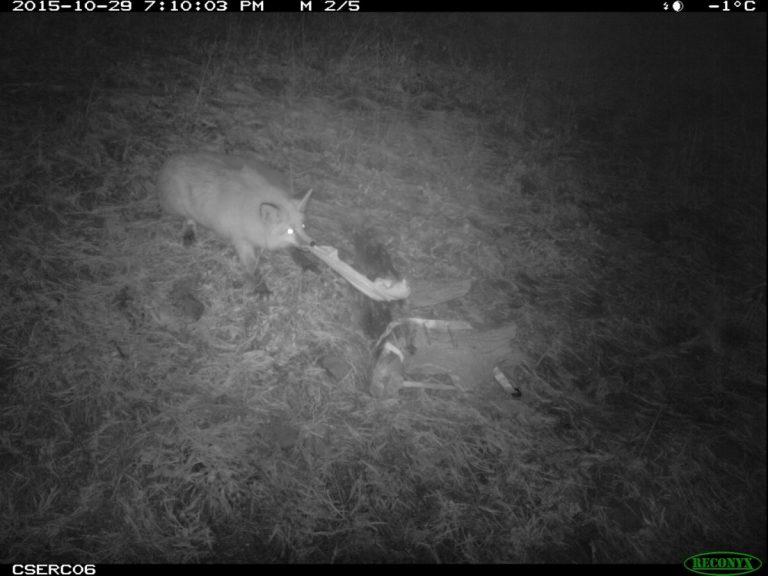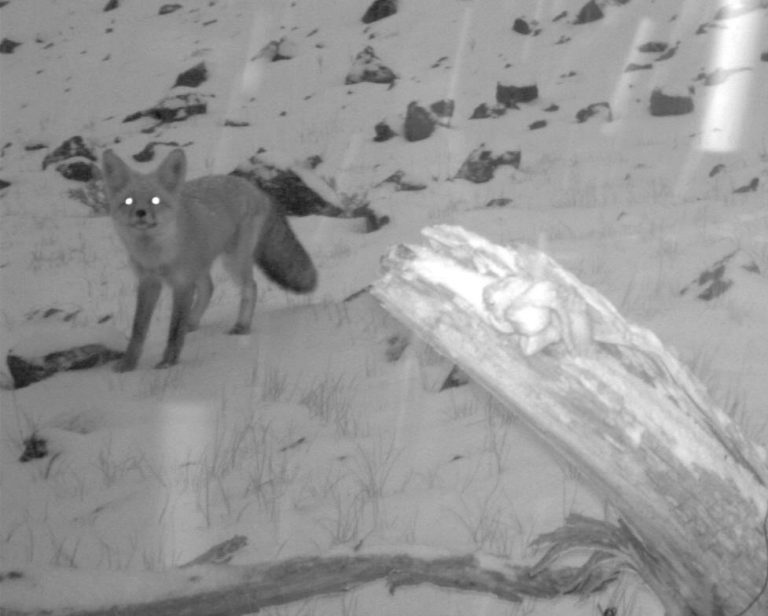
After years of scientific studies, the U.S. Fish and Wildlife Service in January formally proposed to list the Sierra Nevada “Distinct Population Segment” of the Sierra Nevada red fox (SNRF) as threatened or endangered. For CSERC, that is very good news.
Put most simply, the Sierra Nevada population of the rare fox is on the brink of disappearing forever. Across the entire mountain range, scientists believe there may be only 15 to 50 adult foxes, with the best estimate being a meager 29 adults.
Over the past 15 years, CSERC staff has done extensive photo-detection surveys – searching for the elusive fox in remote, high elevation areas. CSERC’s work has been done under agreements with Forest Service and Park Service biologists. During all those years of efforts, we’ve only managed to get photo evidence of foxes in a few widely spaced locations.
In its latest agency action, the Fish and Wildlife Service asked all interested parties for any additional scientific data before the final decision is made. CSERC joined with four other conservation organizations to submit detailed comments with strong support for listing the fox.

There are many reasons for the plight of the fox. One key concern is that climate change results in great fluctuations in how much snow accumulates each winter. Some recent drought years have had almost no snowpack. That spells trouble for the fox. The Sierra Nevada red fox (SNRF) is uniquely adapted to persevere in extreme winter conditions with deep snow at the very crest of the mountain range. But when there is little winter snow, coyotes can intrude -- far up into the mountains – potentially preying on the much smaller foxes and almost certainly competing with the foxes for food. In a separate, but related effort, CSERC has opposed a proposed Forest Service plan to open roadless high elevation fox habitat to snowmobile use. Snowmobiles pack the snow, making remote crest-zone areas much easier for coyotes to access by traveling on the packed snow left by the snowmobiles.
It may be that the SNRF population in the Sierra Nevada is just too small to allow the charismatic foxes to survive if climate change effects continue to grow more severe. But if the foxes can gain formal listing from the UWFWS as threatened or endangered, that would allow federal agency scientists to take strategic actions to boost the fox’s recovery.
CSERC has poured countless hours of staff time into doing field surveys to help gain scientific information about the rare foxes. We’re grateful for our federal agency biologist partners who have worked toward that common goal. Based on all that we have learned over the years, CSERC strongly endorses listing the fox. That may be its only hope for survival over the long term.

